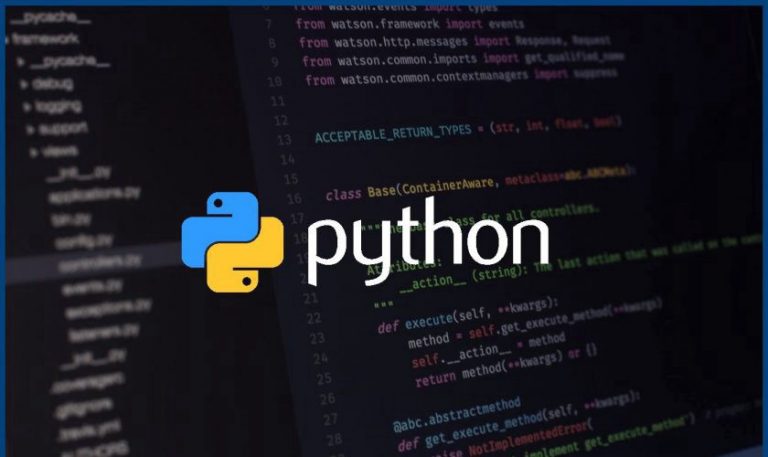We already mentioned in the previous blog post that Python has become the most popular programming language, but why Python?
Python is a general-purpose, high-level programming language, which means it is easier to understand and can be used to solve a wide variety of problems. With a simple syntax, high readability and usability on all operating systems, Python is a very practical language when learning to program and enormously useful for a wide variety of applications. Therefore, it is not surprising that Python is prevalent not only in today's job market, but also in the common technology we use in our daily lives.
Python programming is a skill that can be used in virtually any area, as well as in positions beyond simple software development. From areas like finance, healthcare, and insurance, to fields like aerospace and entertainment, Python-based technology is driving innovation and new solutions.
Within this wide variety of areas in which Python is present, we are going to focus on the most in-demand.
Big Data
It is evident that we live in the age of information and data, that is, in the era of big data. Every day, we come into contact with data in our daily lives, with technologies such as GPS, online shopping, smartphones, smart TVs, smart watches, etc. We are continually producing data. The average home contains around eleven devices and that number is likely to increase in the future. With so many devices, there is a large amount of data that companies want to process in order to provide their services. Python-based tools are often used to visualize, process, and analyze large amounts of data.
Data science is concerned with data processing and trend inference, and Python is incredibly useful in this area due to its intensive packages like scipy, numpy and pandas. Furthermore, the package matplotlib can be used to create data visualizations. This makes this programming language a popular choice in fields like bioinformatics that also involve a lot of data and modeling. These Python-based tools have become popular due to their ease of use and scalability. For example, Netflix uses scipy and numpy for numerical computing to manage user traffic on the platform.
hacking
Python has also become the most popular programming language in the world of computer security and hacking, widely used by pentesters and computer security enthusiasts and also by cybercriminals who seek to detect and exploit vulnerabilities. Its use ranges from the creation of scripts to automate tasks, such as system configuration, basic malware analysis and vulnerability analysis, to creation exploits.
Artificial Intelligence and Machine Learning
By analyzing large amounts of data, machine learning algorithms can find patterns and apply those patterns to make sense of future behavior. The most obvious use of machine learning in products is recommendation systems. Companies like Netflix, Spotify, and YouTube collect user activity to make predictions and suggest playlists and videos. Scikit-learn and tensorflow are Python libraries that allow the use of algorithms for classification, clustering, and regression on large data sets. The high performance and broad functionality of these libraries make them essential in any exploration of machine learning.
Machine learning is really just one facet of artificial intelligence. AI refers to machine intelligence and the development of computer systems to perform human-oriented tasks such as perception or decision-making. A prominent example of artificial intelligence is ride-sharing apps such as Uber and Lyft.
This language is used in artificial intelligence for applications like Lyft or Uber. The AI system can predict things like user demand and estimated arrival times. Uber uses AI to predict user demand and estimated arrival times (among other features) and much of this is accomplished through Python. In addition to some of the libraries mentioned above, AI functionality such as prediction models and neural networks can be created through other libraries such as keras and pytorch.
In conclusion, Python Not only is it one of the cleanest, most readable, and relatively easy programming languages to learn as a programmer, but it is also a mature language supported by a large community of developers, making it the programming specialization that is most in mind. and future prospects thanks largely to new uses in Big Data, Hacking, and Machine Learning. Therefore, it is not unusual for their profiles to be highly in demand by the largest companies worldwide.


































Good morning
I am interested in continuous learning, I am interested in Python as a programming language so that once I have acquired the knowledge, I can enter the workplace, but I find it difficult to see that many courses and workshops on Python are promoted as free and they are not.
Please, I would appreciate it if you have any course, workshop or event that is free training.
I am looking forward to your response
Happy Sunday. Greetings Jorge
Hello Jorge, thank you for your message and your interest in our school. Unfortunately, training at our school is not free. In any case, we give you the link to our master's degree in Python in case you want to contact our team of advisors and ask them any questions you may have. https://eiposgrados.com/programas/master-en-python/ Thank you. Greetings,